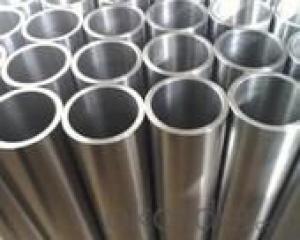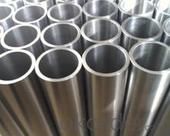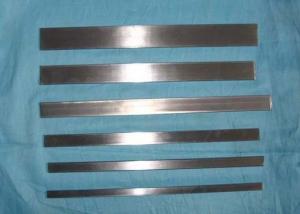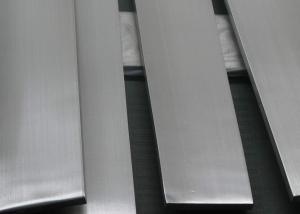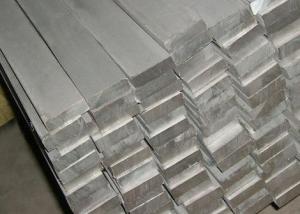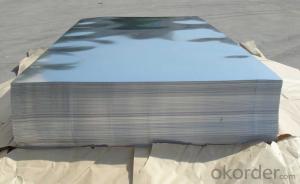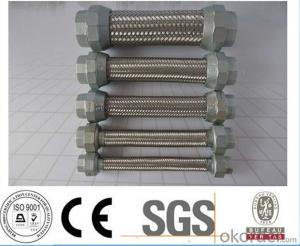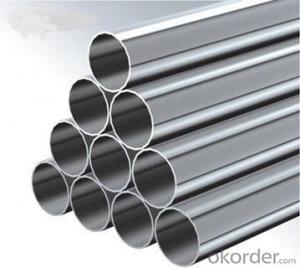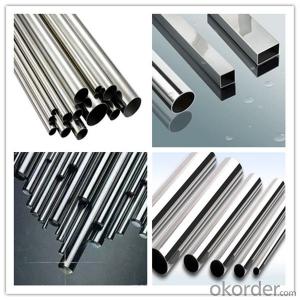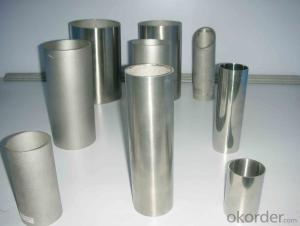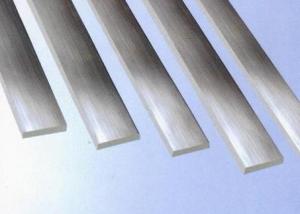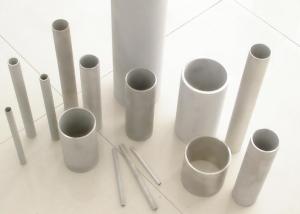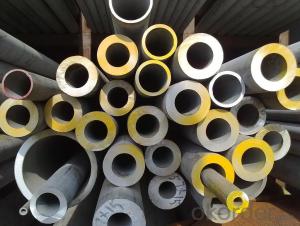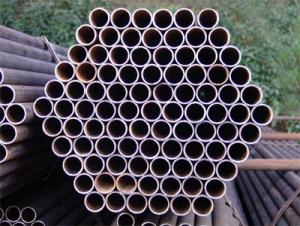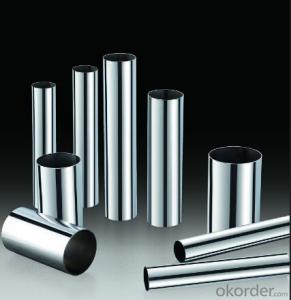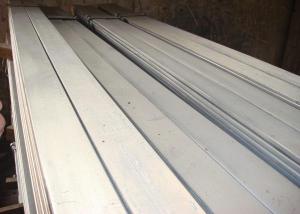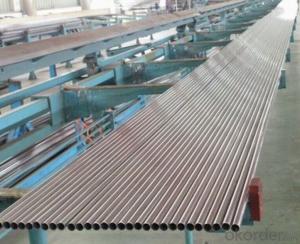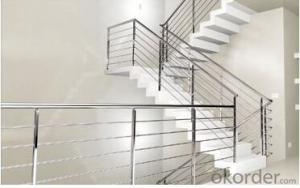The 316L stainless steel pipe
- Loading Port:
- Shanghai
- Payment Terms:
- TT OR LC
- Min Order Qty:
- -
- Supply Capability:
- 20000 kg/month
OKorder Service Pledge
OKorder Financial Service
You Might Also Like
316L is a stainless steel grades, said the main containing Cr, Ni, Mo digital percentage probably contains (not accurate, probably only), 316L is the material corresponding US label, Sus 316L is corresponding to the Japanese label. Standard of our country as 022Cr17Ni12Mo2. (new standard) of old brand 00Cr17Ni14Mo2
316L - C: chemical composition of carbon less than 0.030 silicon Si: less than or equal to 1
Manganese: less than 2 Mn
316L S: less than 0.030 sulfur
P: less than 0.035 P
Chrome Cr:16.00 ~ 18
Ni Ni:12.00 ~ 16
Mo Mo:2.00 ~ 3
Corrosion resistance
316L because of its excellent corrosion resistance is widely used in chemical industry, 316L is belong to 18-8 type austenitic stainless steel are derived, add the Mo element 2 ~ 3%. On the basis of 316L, and derived a lot of steel, such as adding a small amount of Ti derived after 316Ti, add a small amount of N derived after 316N, increased Ni, Mo content derived 317L.
The market of the existing 316L most is in accordance with the American Standard to production. Because of cost considerations, steel mills generally the Ni content of the products as much as possible to lower limit on. American standard regulation, Ni of 316L content for 10 ~ 14% day marks the regulation, Ni of 316L content for 12 ~ 15%. According to the minimum standard, American Standard and Japanese standard 2% of the difference in the Ni content, reflected in the price is quite huge, so customers in the purchase of 316L products still need to see, the product is according to ASTM or JIS standard.
Mo 316L content makes this kind of steel has excellent resistance to pitting corrosion, can be safely used in containing Cl - and halogen ion environment. As the main application of 316L is its chemical properties, surface inspection of steel on the requirements of 316L was slightly lower (relative to 304), higher on the surface of the customer must strengthen the surface inspection dynamics.
316L - Mechanical Properties of tensile strength B (MPa): 480
The yield strength of sigma 0.2 (MPa): 177
Elongation of 5 (%): 40
Section shrinkage (%): = 60 PSI
Hardness: = 187HB; = 90HRB; = 200HV
Hardness is less than or equal to 187HB = 90HRB = 200HV
Density: 7.98g/cm3;
Specific heat ratio (20 DEG C): 0.502J/ (g*K)
Thermal conductivity (W/ (m*K))
100 C 300 C 500 C
15.1 18.4 20.9
316L - heat treatment solution 1010 ~ 1150 DEG C fast cooling.
316L - metallographic organization characteristics for austenitic.
- Q: Are stainless steel pipes recyclable?
- Indeed, stainless steel pipes can indeed be recycled. As a remarkably sustainable material, stainless steel possesses the ability to be recycled endlessly without compromising its characteristics. Consequently, stainless steel pipes can be melted and reconfigured into fresh stainless steel goods, rendering them a prized asset within the recycling sector. The recycling procedure for stainless steel pipes encompasses the collection and categorization of the pipes, their subsequent melting in a furnace, and finally their transformation into novel products. The act of recycling stainless steel pipes not only safeguards our natural resources but also diminishes energy consumption and greenhouse gas emissions linked to the manufacturing of new stainless steel.
- Q: Are stainless steel pipes suitable for gas distribution systems?
- Yes, stainless steel pipes are suitable for gas distribution systems. Stainless steel is a highly durable and corrosion-resistant material, making it ideal for carrying gases. It can withstand high pressures and temperatures, ensuring the safe and efficient distribution of gas. Additionally, stainless steel pipes have a long lifespan, reducing the need for frequent replacements and minimizing maintenance costs. Overall, stainless steel pipes provide a reliable and secure solution for gas distribution systems.
- Q: What is the difference between SCH and XS stainless steel pipes?
- Two distinct schedules or pipe thicknesses are employed in stainless steel pipes, namely SCH and XS. SCH represents schedule, while XS signifies extra strong. The primary disparity between SCH and XS stainless steel pipes can be found in their wall thickness. SCH pipes possess a standardized thickness range, whereas XS pipes exhibit a thicker wall in comparison to SCH pipes. SCH pipes are commonly utilized for general-purpose applications where elevated pressure is not a significant concern. They are available in various schedules, such as SCH 5, SCH 10, SCH 40, and so forth. The schedule number increases as the wall of the pipe thickens. SCH pipes are suitable for applications involving low to medium pressure. Conversely, XS pipes are engineered to withstand higher pressure and are frequently employed in more demanding scenarios. XS pipes possess a thicker wall than SCH pipes, offering enhanced strength and durability. They are prevalent in industries such as oil and gas, chemical processing, and power plants, wherein high pressure and corrosive environments are prevalent. To summarize, the primary distinction between SCH and XS stainless steel pipes lies in the thickness of their walls. SCH pipes possess a standardized thickness range, while XS pipes exhibit a thicker wall specifically tailored for high-pressure applications.
- Q: Can stainless steel pipes be used for cryogenic storage tanks?
- Indeed, cryogenic storage tanks can indeed utilize stainless steel pipes. Renowned for its exceptional resistance to corrosion, durability, and strength, stainless steel proves itself as an appropriate choice for the containment of exceedingly cold liquids or gases. Specifically designed for materials preservation at extremely low temperatures, typically below -150 degrees Celsius, cryogenic storage tanks necessitate materials that will not become brittle or compromise their mechanical properties. Stainless steel pipes effectively withstand these frigid temperatures without faltering. Furthermore, stainless steel's low thermal conductivity assists in minimizing heat transfer and maintaining the desired temperature within the storage tank. Consequently, stainless steel pipes are widely employed in cryogenic storage tanks to guarantee the secure and efficient storage of cryogenic substances.
- Q: What does "stainless steel pipe" DN mean?
- Nominal diameter is the size of all piping accessories in the piping system. The nominal diameter is a convenient round integer for reference and is not strictly related to the processing size. The nominal diameter follows the letter "DN" followed by a number sign.
- Q: What's the easiest way to distinguish between stainless steel 202 and 304?
- 304 stainless steel performance is better than 202 stainless steel, the price is more expensive than 202 stainless steel.
- Q: How do you calculate the flow rate of fluid through stainless steel pipes?
- To determine the flow rate of fluid through stainless steel pipes, one can utilize either the Bernoulli's equation or the Darcy-Weisbach equation. These equations incorporate several factors, including the pipe's diameter, length, fluid viscosity, and the pressure difference between both ends. 1. Bernoulli's equation, which hinges on the principle of energy conservation, establishes a relationship between pressure, velocity, and elevation along the fluid's path. The equation is as follows: P1 + 0.5 * ρ * V1^2 + ρ * g * h1 = P2 + 0.5 * ρ * V2^2 + ρ * g * h2 Here: - P1 and P2 denote the pressures at the pipe's two ends. - ρ represents the fluid's density. - V1 and V2 denote the fluid velocities at each end of the pipe. - g signifies the acceleration caused by gravity. - h1 and h2 refer to the fluid elevations at the respective ends. By rearranging the equation and solving for either V1 or V2, one can calculate the fluid's velocity. Multiplying this velocity by the pipe's cross-sectional area yields the flow rate. 2. The Darcy-Weisbach equation, widely employed to calculate pressure drop or head loss due to frictional resistance in a pipe, is expressed as follows: ΔP = f * (L / D) * (ρ * V^2 / 2) Here: - ΔP represents the pressure drop between the pipe's two ends. - f denotes the Darcy friction factor, which relies on the Reynolds number and pipe roughness. - L corresponds to the pipe's length. - D signifies the pipe's diameter. - ρ represents the fluid's density. - V denotes the fluid's velocity. By rearranging the equation and solving for V, one can compute the fluid's velocity. Multiplying this velocity by the pipe's cross-sectional area provides the flow rate. It is crucial to acknowledge that these equations offer theoretical calculations, and actual flow rates may deviate due to additional factors such as pipe roughness, fittings, and bends. Consequently, it is advisable to account for these factors, conduct experiments, or consult industry standards for more precise calculations.
- Q: What's the difference between stainless steel pipe and stainless steel composite pipe?
- The stainless steel composite pipe is iron pipe. The outside is plated with stainless steel. It is heavy, but it is easy to rust for a long time,
- Q: Stainless steel pipe pickling ratio
- Usage: used for contaminant removal of various types of stainless steel parts, sheet metal surface and its equipment rust, oxide skin, after welding of yellow blue black spot welding, a silver white metal surface cleaning, and surface passivation, corrosion resistance of stainless steel.
- Q: How do you calculate the weight of stainless steel pipes?
- To calculate the weight of stainless steel pipes, you need to consider a few factors. Firstly, you need to determine the outer diameter (OD) and the thickness (T) of the pipe. Once you have these measurements, you can use the following formula to calculate the weight per foot (or meter) of the stainless steel pipe: Weight per foot (or meter) = (OD - T) * T * 0.0246615 This formula assumes that the stainless steel pipe is of a round shape. The weight per foot can then be multiplied by the length of the pipe in feet (or meters) to calculate the total weight. It is important to note that the density of stainless steel may vary depending on the specific grade and composition. Therefore, the weight calculated using this formula will provide an approximate value. If precise weight calculations are required, it is recommended to consult a reference table or contact the manufacturer for more accurate information.
Send your message to us
The 316L stainless steel pipe
- Loading Port:
- Shanghai
- Payment Terms:
- TT OR LC
- Min Order Qty:
- -
- Supply Capability:
- 20000 kg/month
OKorder Service Pledge
OKorder Financial Service
Similar products
Hot products
Hot Searches
Related keywords
